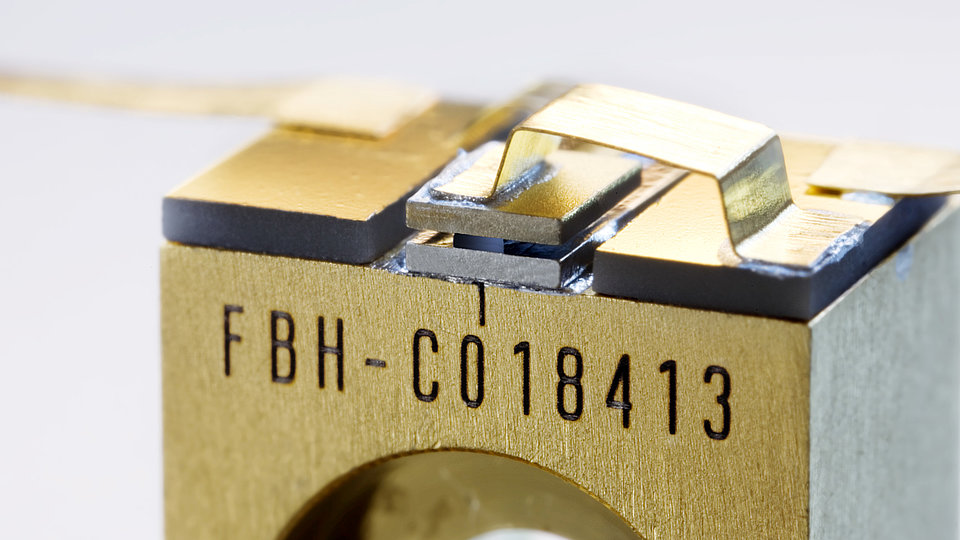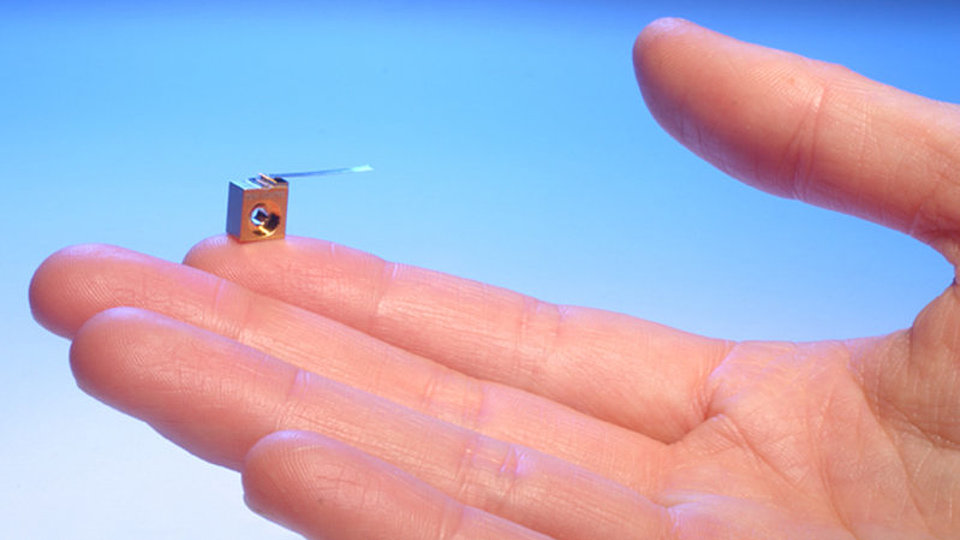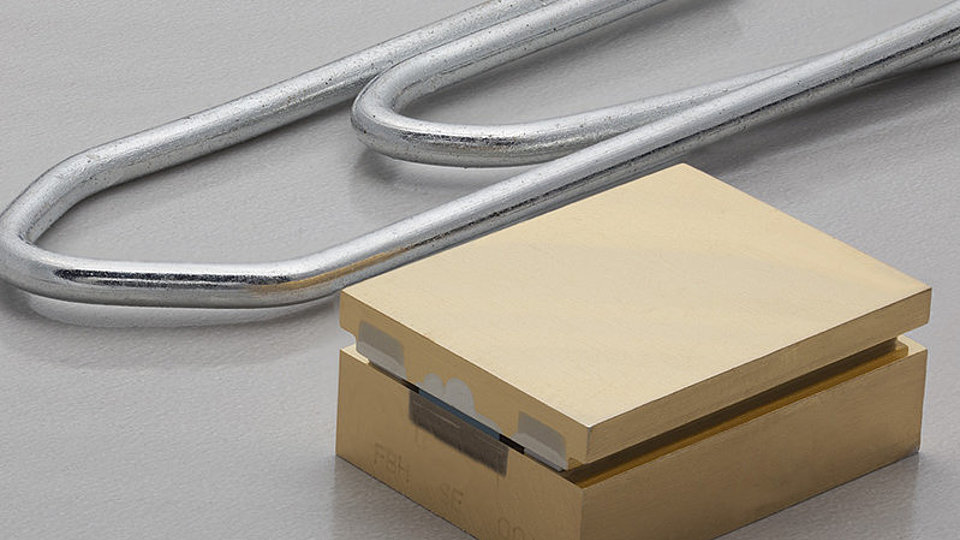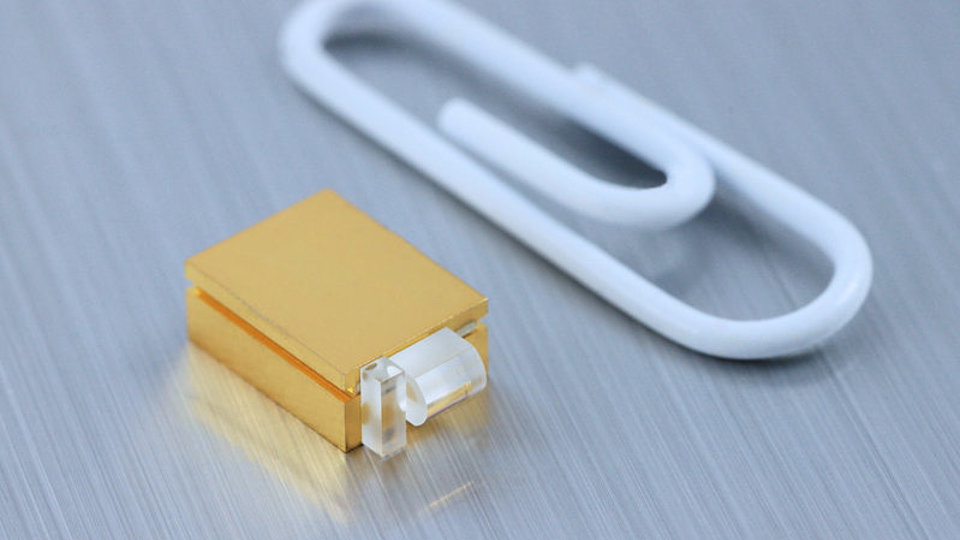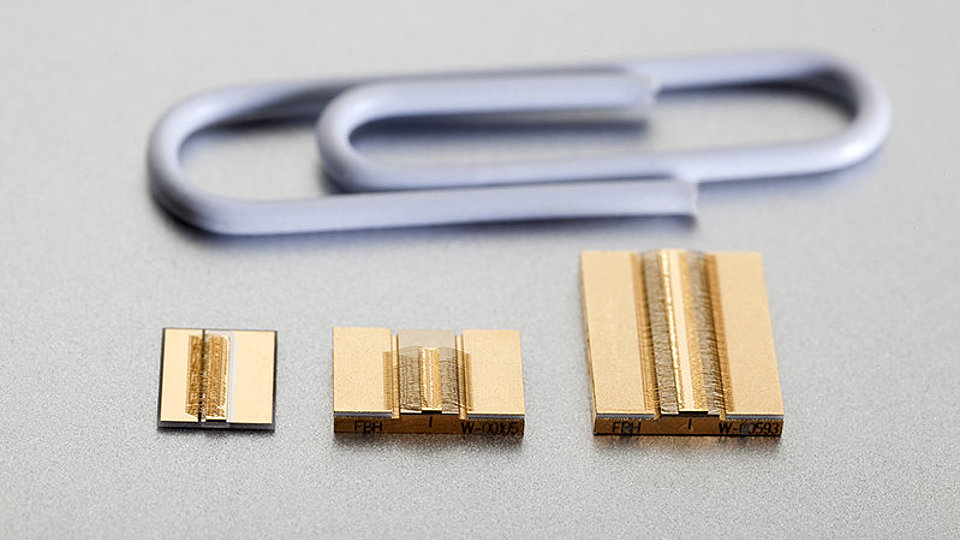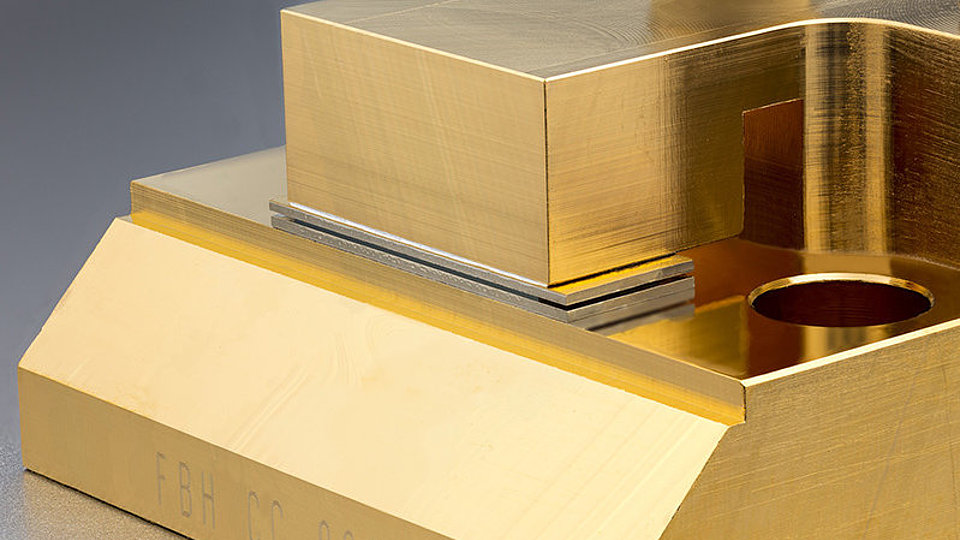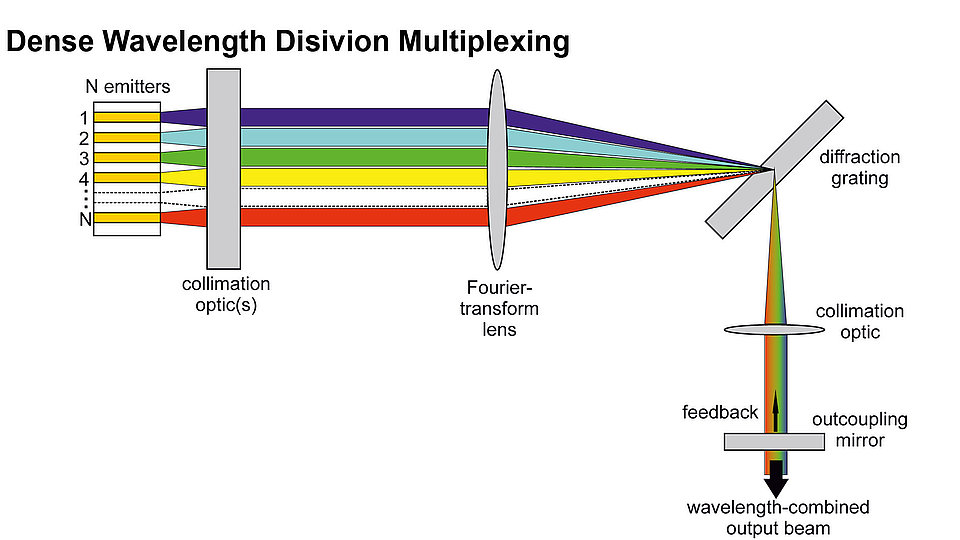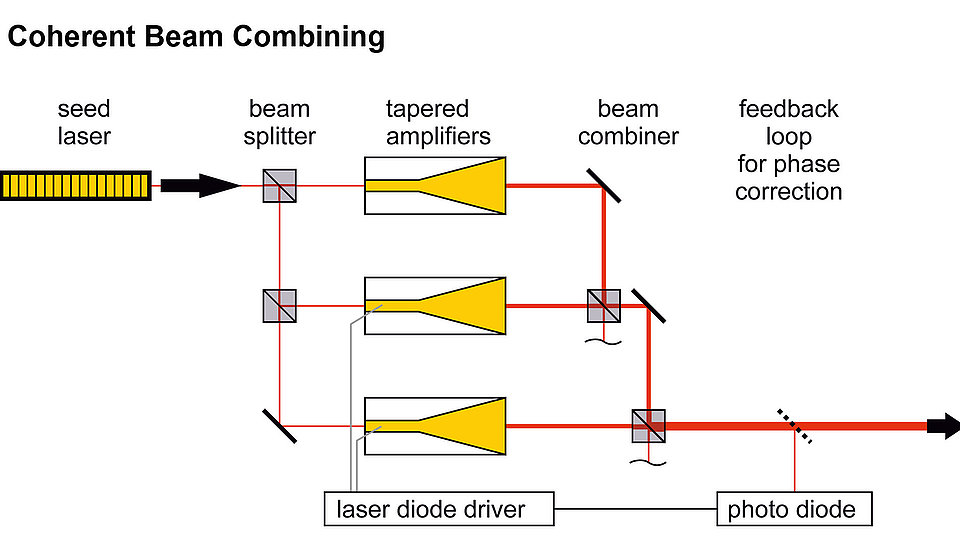Beam Combining for High Brightness
High-brightness applications, such as laser material processing, mostly use diode lasers as pump sources. With the aim of enabling their direct use, we develop and optimize beam combining methods such as "Dense Wavelength Division Multiplexing" (DWDM), polarization coupling and "Coherent Beam Combining" (CBC). These methods could help diode lasers achieve a market breakthrough in direct applications - we have made significant progress in this regard.
Efficient beam bundling
In cooperation with partners in research and industry, various beam combining methods have been investigated. The developed light sources are able to combine the light of individual emitters with exceptional efficiency.
Basically, three different methods for combining high-power diode laser beams are available. They enable coupling by means of the following beam characteristics: wavelength, polarization and coherence of the individual emitters.
Dense Wavelength Division Multiplexing (DWDM) offers the possibility of spectrally coupling single-mode laser bars as well as individual lasers (e.g. DBR tapered lasers). With the help of optical gratings or special dichroic coated filters, different construction options can be realized. The external spectral stabilization and combination of broad-area lasers and bars is already used in commercially-available systems, which can, however, be made more efficient using optimized components.
For spectrally narrow-band power scaling of several light sources, Coherent Beam Combining (CBC) can be used, in which the spatial phase of several coherently-coupled lasers relative to each other is controlled. Novel amplifiers are suitable for this purpose, whose optical power is combined by means of CBC to form a nearly diffraction-limited beam.
These methods have been applied in various module classes within the scope of different projects. This covers the range from modules for pumping solid-state lasers to micromodules for direct material processing.
NIR range:
- single-pass tapered semiconductor optical amplifiers with high beam quality for efficient coherent beam combining
- laser bars with narrow vertical far field for low loss, smile-insensitive external spectral stabilization
- efficient high-power bars of single-mode emitters for dense wavelength multiplexing (DWM) applications
- high-brightness grating-stabilized mini-bars tailored for spectral beam combination applications
- Micromodule with polarization coupling: P >12 W; M² < 2
- Micromodule with spectral and polarization coupling: P > 30 W; M² < 3
